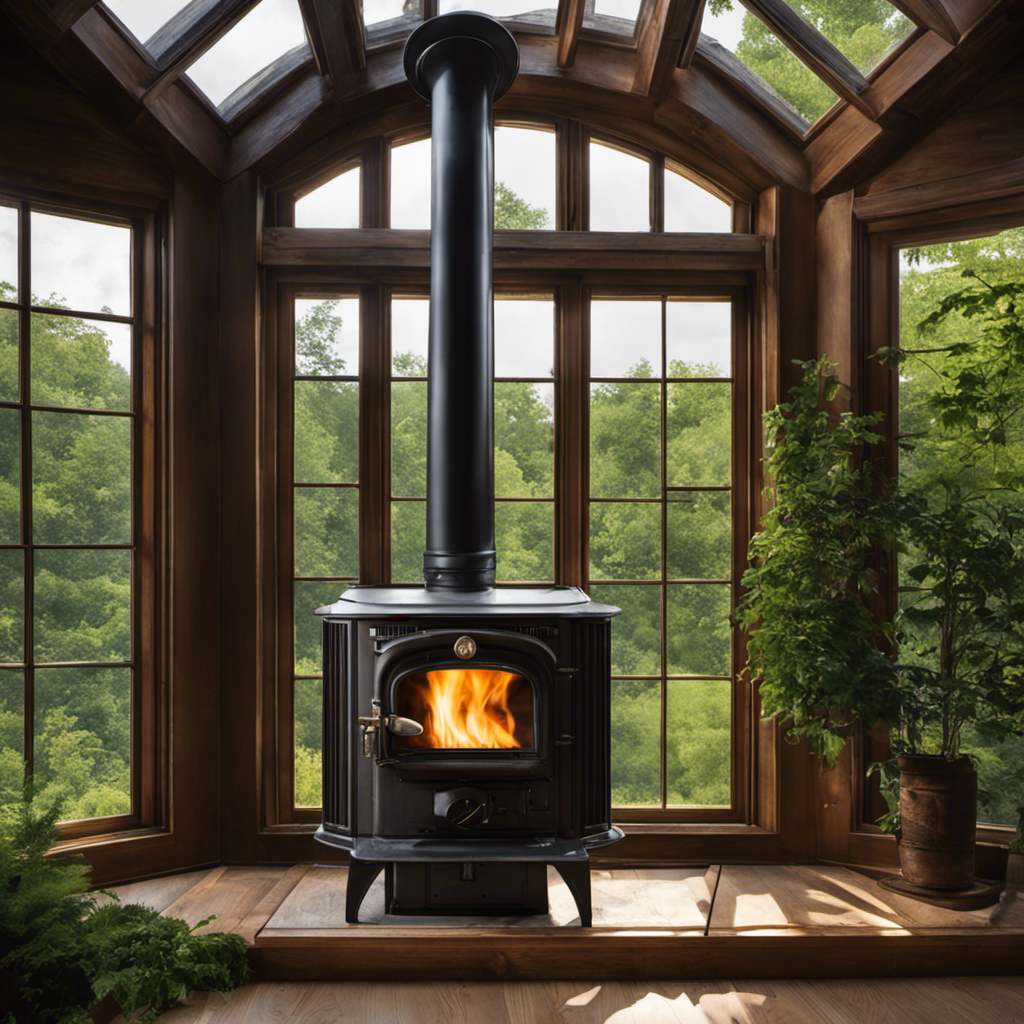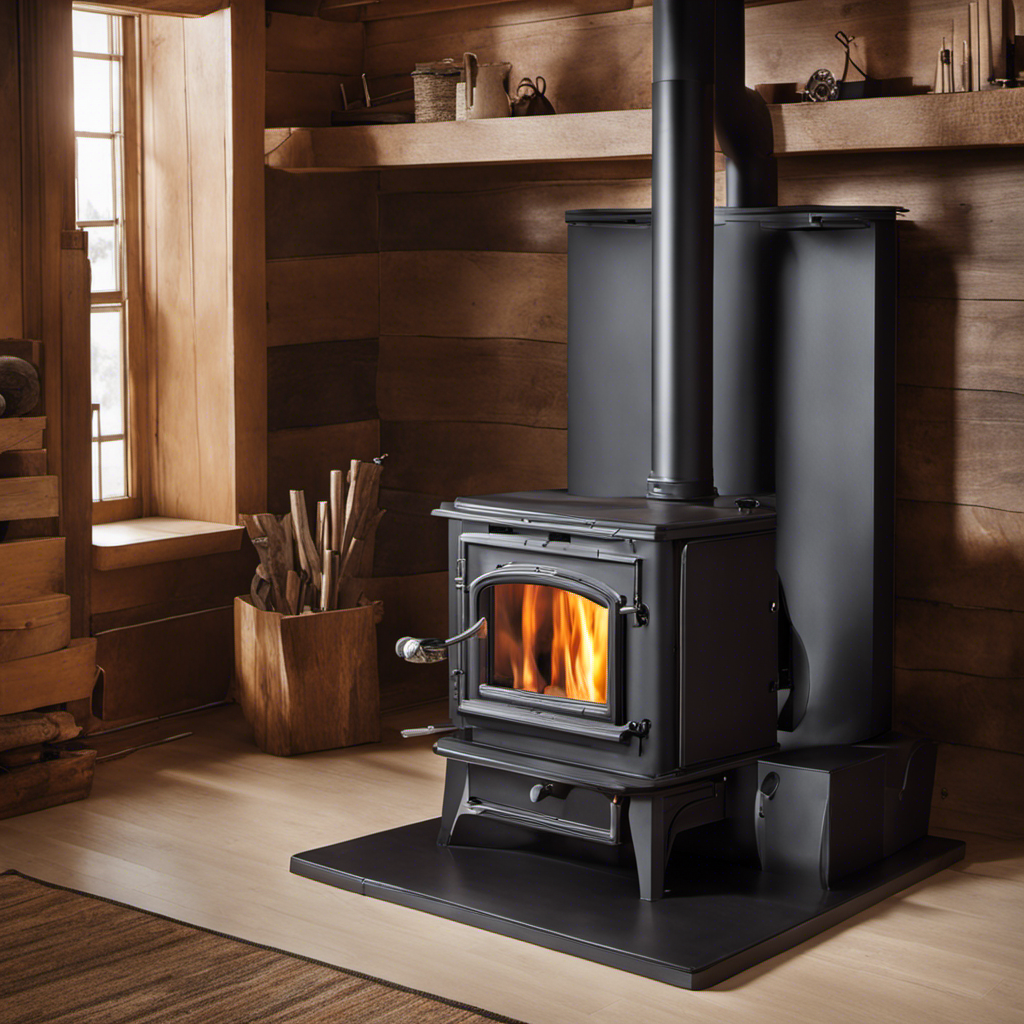I want to emphasize the importance of the chimney in a wood stove for those who use it for heating. It plays a crucial role in keeping your home warm and safe during the cold winter months.
The flue acts as a pathway for smoke and gases to escape, preventing any buildup inside your house.
In this article, I’ll break down the ins and outs of wood stove flues, from their components to installation and maintenance.
So, let’s dive in and learn everything there is to know about wood stove flues!

Key Takeaways
- The wood stove flue is important for allowing smoke and gases to escape, preventing buildup in the house.
- Regular maintenance and cleaning of the flue liner are crucial to prevent hazards and ensure safe and efficient operation of the wood stove.
- The chimney cap is an important component of the wood stove flue system as it prevents debris from entering the chimney.
- Proper installation and regular maintenance of the wood stove flue system, including the chimney cap, are necessary to ensure proper functioning and efficiency.
Understanding the Function of a Wood Stove Flue
I really appreciate the knowledge I’ve gained about the function of a wood stove flue.
When it comes to chimney construction, the flue is an essential component that ensures the safe operation of a wood stove. The flue acts as a passageway for the exhaust gases produced by the burning wood to exit the home. It’s typically made of a metal or ceramic material and is built within the chimney structure.
Proper flue liner maintenance is crucial to prevent potential hazards such as chimney fires and carbon monoxide poisoning. Regular inspection and cleaning of the flue liner can help remove creosote buildup and ensure efficient operation.
Understanding the function of a wood stove flue is vital for anyone using a wood stove to heat their home.

Components of a Wood Stove Flue System
One important component of a wood stove flue system is the chimney cap. It serves as a protective cover for the chimney opening, preventing rain, snow, and debris from entering.
The installation process for a chimney cap is relatively straightforward. First, measure the dimensions of your chimney to ensure a proper fit. Next, choose a cap made of durable materials like stainless steel or copper, as these can withstand the high temperatures produced by the wood stove. Attach the cap securely to the chimney using screws or brackets.
It’s crucial to follow the manufacturer’s instructions and local building codes during installation to avoid potential hazards. Regular maintenance, such as cleaning and inspecting the cap for damage, is also necessary to ensure its proper functioning and prevent any obstructions that could compromise the efficiency of the wood stove flue system.
Types of Wood Stove Flues and Chimneys
When choosing a type of chimney for my wood stove, it’s important to consider factors such as height, insulation, and material. The type of material used for the flue can greatly impact its performance and durability. Here are three common types of wood stove flue materials and the emotional responses they evoke:
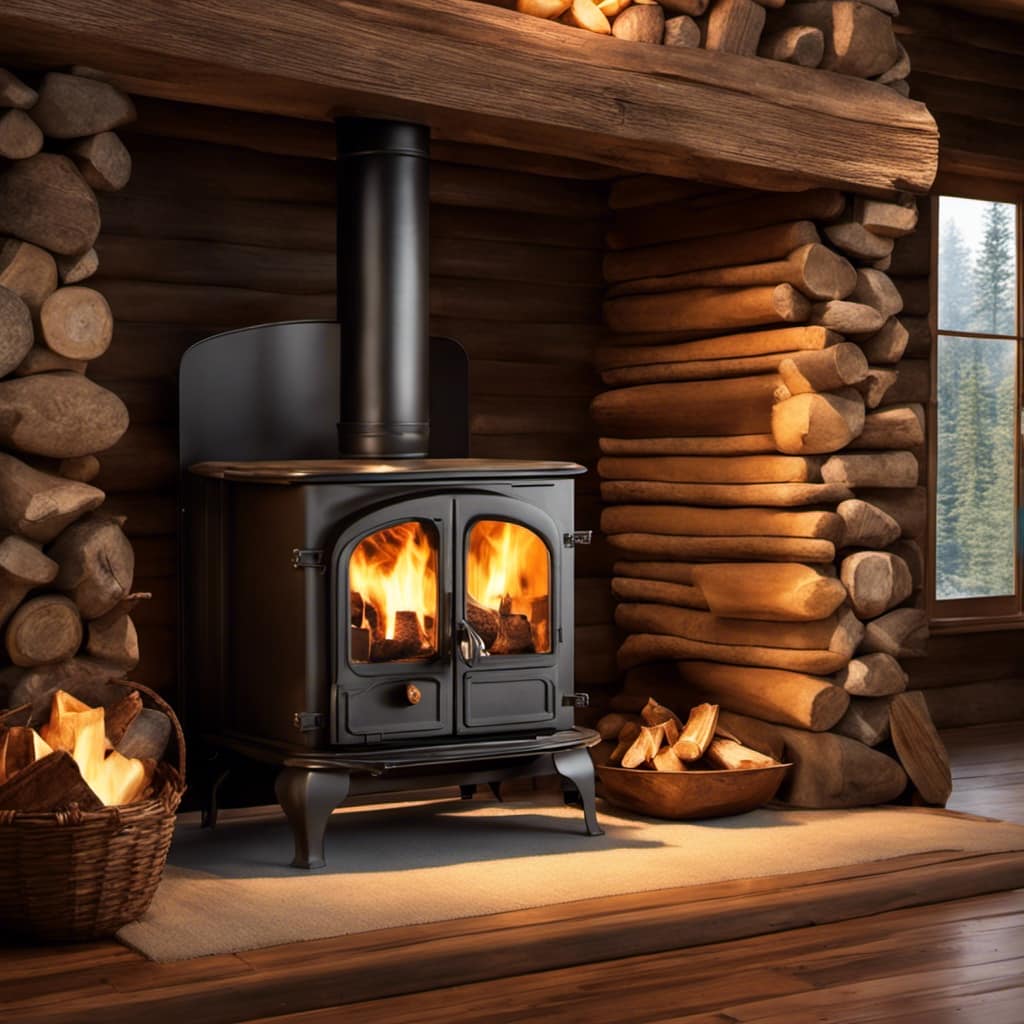
Stainless steel: This material provides excellent corrosion resistance and durability, giving me peace of mind knowing that my chimney will last for years to come.
Cast iron: Known for its classic and timeless look, a cast iron flue adds a touch of elegance to my home while also providing excellent heat retention properties.
Clay tile: Clay tile flues are cost-effective and readily available. However, they can be more susceptible to cracking and damage over time, which can be a source of frustration and concern.
Proper Installation and Maintenance of a Wood Stove Flue
Proper installation and regular maintenance ensure that my wood stove flue functions efficiently and safely.

Wood stove flue safety is of utmost importance to prevent potential hazards. One common problem with wood stove flues is the buildup of creosote, a highly flammable substance that forms when burning wood. Creosote can accumulate on the interior walls of the flue, leading to a dangerous chimney fire. Regular cleaning and inspection of the flue can help prevent this issue.
Another common problem is improper installation, which can result in poor draft or smoke leakage. Hiring a professional to install the wood stove flue according to local building codes and manufacturer’s instructions is crucial for safe operation.
Additionally, regular inspection of the flue for any cracks, loose joints, or damage is essential to maintain its efficiency and prevent carbon monoxide leaks.
Benefits of a Well-Maintained Wood Stove Flue
Maintaining my wood stove’s flue properly has numerous benefits, including increased efficiency and reduced risk of chimney fires. Here are three advantages of a well-maintained wood stove flue:
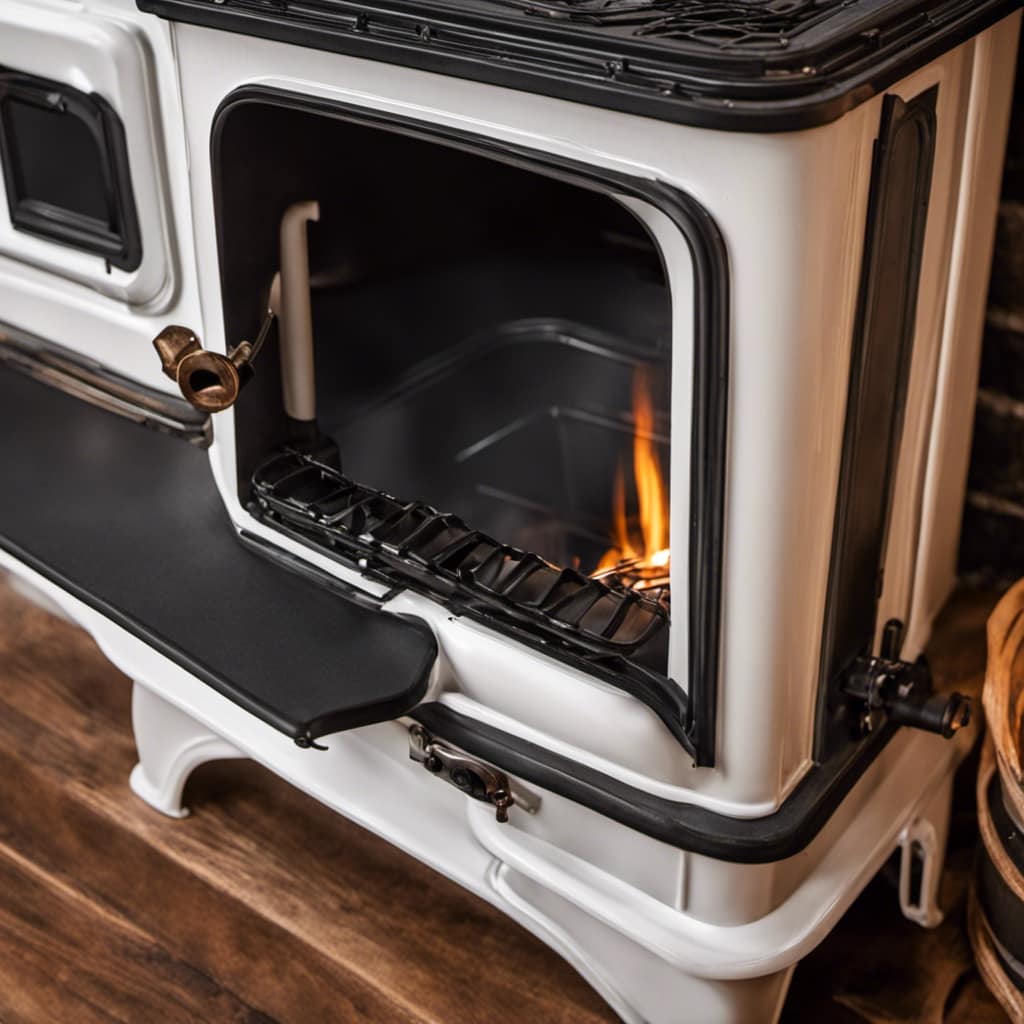
Improved Energy Efficiency: A clean and properly functioning flue allows for better airflow, ensuring that your wood stove burns fuel more efficiently. This means that you can get more heat from the same amount of wood, saving you money on fuel costs.
Enhanced Safety: A well-maintained flue reduces the risk of chimney fires. Creosote, a byproduct of burning wood, can build up in the flue over time and become highly flammable. Regular cleaning and inspection of the flue can help prevent the accumulation of creosote and reduce the chances of a dangerous chimney fire.
Longevity of the Wood Stove: By taking care of your flue, you’re also extending the lifespan of your wood stove. A properly maintained flue ensures that the stove operates optimally, reducing the wear and tear on its components and increasing its durability.
Given these advantages, it’s clear that the importance of maintaining a wood stove flue can’t be overstated.
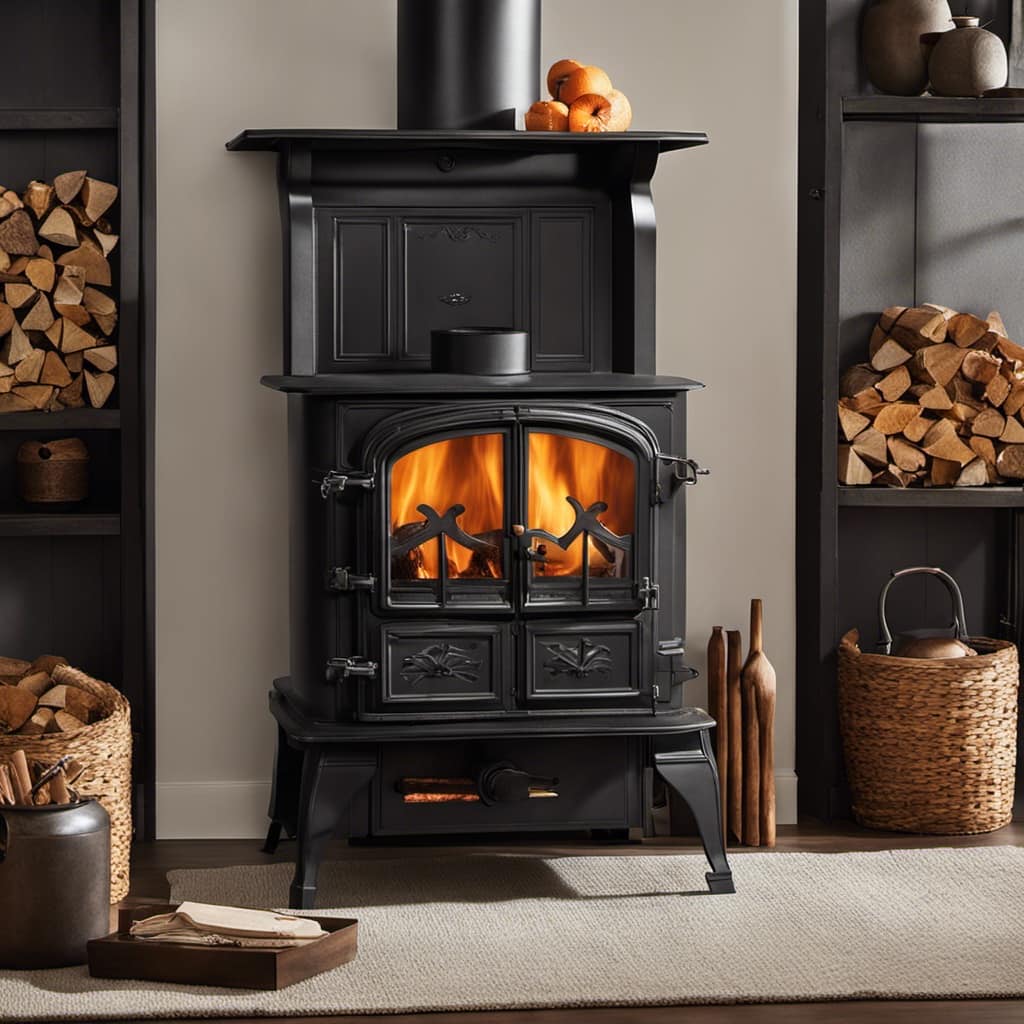
Frequently Asked Questions
Can a Wood Stove Flue Be Installed in Any Type of Home?
Yes, a wood stove flue can be installed in most homes. However, the suitability of the installation depends on the type of home. It is important to consult with a professional to determine if your home is suitable for a wood stove flue installation.
How Often Should a Wood Stove Flue Be Cleaned?
I clean my wood stove flue at least once a year to prevent chimney fires. Signs of a dirty flue include thick black soot buildup and a smoky smell. Regular inspections are crucial for safety.
Are There Any Safety Concerns Associated With Using a Wood Stove Flue?
There are safety concerns associated with using a wood stove flue. It is important to take proper safety precautions and maintain regular maintenance requirements to ensure the safe operation of the flue.
Can a Wood Stove Flue Be Used With a Fireplace or Only With a Wood Stove?
A wood stove flue can be used with a fireplace or a wood stove. The installation process involves connecting the flue pipe to the stove or fireplace and ensuring proper venting. Using a wood stove flue offers advantages over a fireplace, such as improved efficiency and better control of the fire.
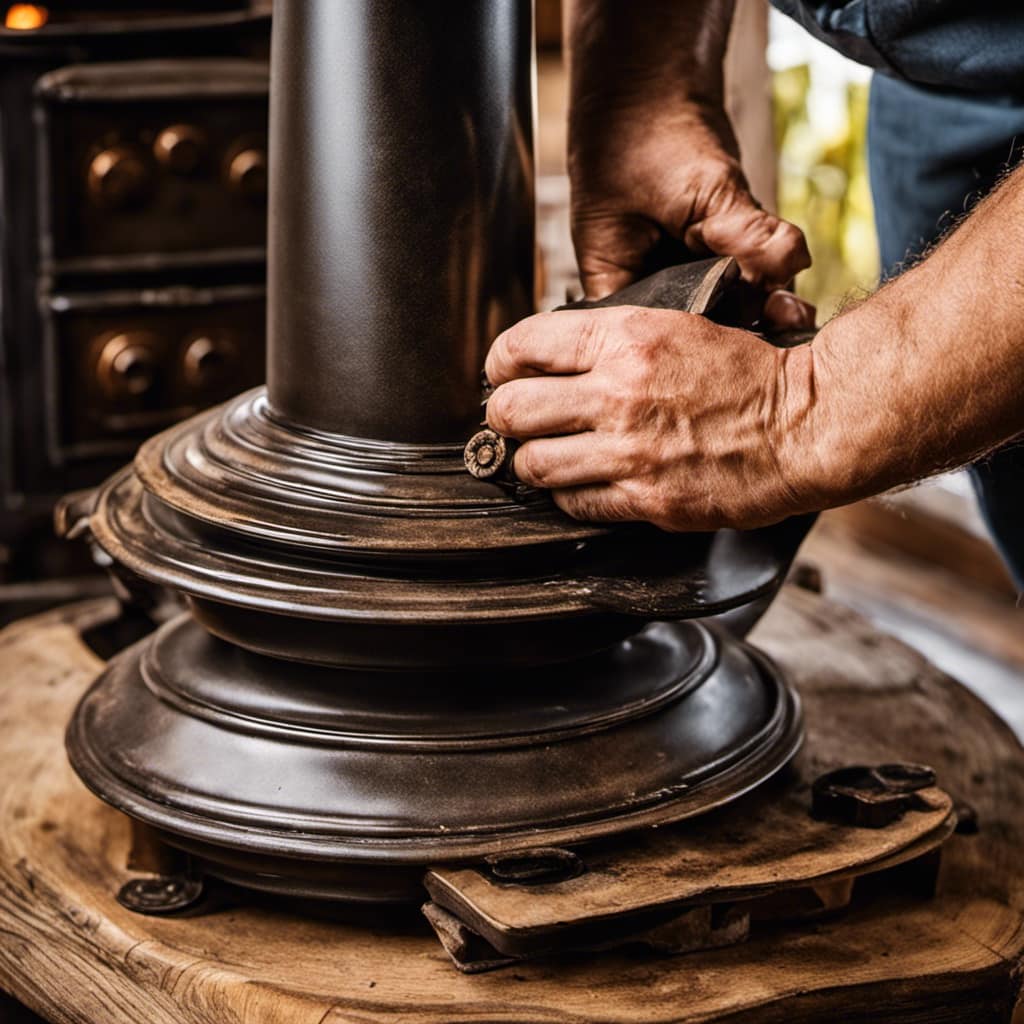
Are There Any Specific Regulations or Codes That Need to Be Followed When Installing a Wood Stove Flue?
When installing a wood stove flue, it is crucial to follow regulations and codes to ensure safety. The installation process varies depending on the type of home and should be done by professionals. Regular cleaning is necessary to prevent any potential hazards. Mixing a wood stove flue with a fireplace or another wood stove requires careful consideration to avoid complications.
Does Opening the Flue on a Wood Stove Affect its Function or Safety?
When using a wood stove, proper wood stove flue opening techniques are crucial for both its function and safety. Opening the flue allows for proper ventilation and air flow, which can help prevent the build-up of dangerous gases like carbon monoxide. It also helps to maintain an efficient and effective burning process.
Conclusion
In conclusion, a well-maintained wood stove flue is like a reliable guardian of your home, ensuring the safe and efficient operation of your wood stove.
It acts as a chimney, guiding the smoke and gases out of your living space, while also preventing any potential fire hazards.
By understanding the function, components, types, and proper installation of a wood stove flue, you can enjoy the benefits of a warm and cozy atmosphere without any worries.

Growing up surrounded by the vast beauty of nature, Sierra was always drawn to the call of the wild. While others sought the comfort of the familiar, she ventured out, embracing the unpredictable and finding stories in the heartbeat of nature.
At the epicenter of every remarkable venture lies a dynamic team—a fusion of diverse talents, visions, and passions. The essence of Best Small Wood Stoves is crafted and refined by such a trio: Sierra, Logan, and Terra. Their collective expertise has transformed the platform into a leading authority on small wood stoves, radiating warmth and knowledge in equal measure.




